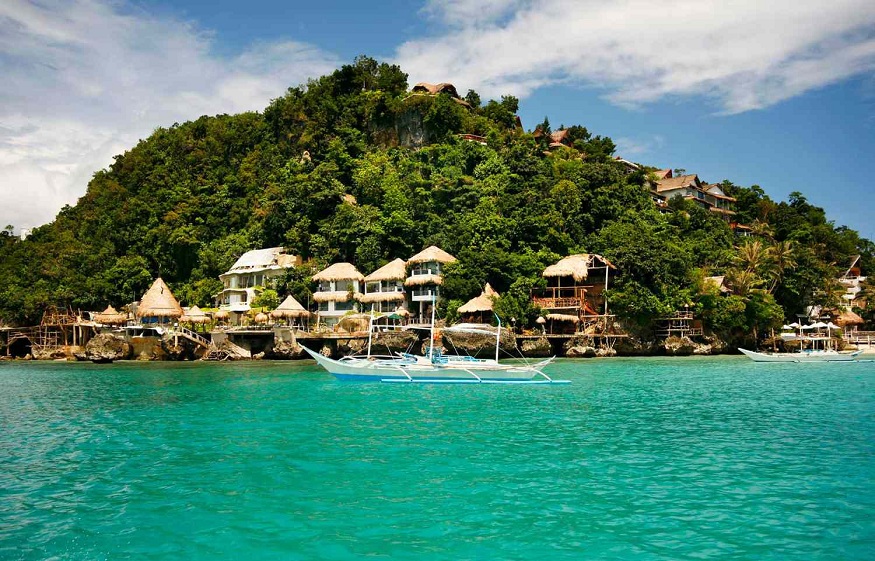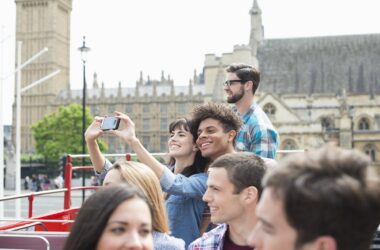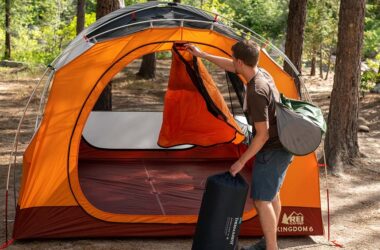Philippines draws countless tourists every year due to its breathtaking beaches, captivating Spanish churches and antique rice fields.
Be sure to bring sunscreen as the Philippines is an active volcanic region that can become very hot. Also bring plenty of water as tipping is common but not as often as seen in Western countries. Many Cathay Pacific flights are right now available, including flights to Manila.
1. Do Your Research
Even though Manila is known as an exotic travel destination, it remains a modern metropolis with contemporary issues such as overpopulation and pollution. If you plan on visiting, be sure to do your research ahead of time as any unexpected situations may come up and prepare yourself accordingly.
No matter your travel experience level, it is wise to research both the city’s history and culture as well as that of its country of destination prior to embarking on your trip. Although asking locals or your tour guide for recommendations can help maximize your enjoyment during their journey, reading up beforehand on key topics will ensure you make the most of your visit.
Consider also exploring the country’s climate and weather conditions, current political situation and knowledge of its earthquake and volcano hazards. Rodrigo Duterte has taken an aggressive stance against crime and drugs since taking office – with thousands losing their lives as a result of his policies. Also keep in mind that Philippines are in an active earthquake zone with numerous volcanoes.
As far as climate is concerned, there are two seasons–wet and dry–in the Philippines, though their exact dates can change from year to year due to typhoons. It’s also worth bearing in mind that these islands make for various weather patterns throughout their regions – so El Nido may experience more rainfall than Manila itself for instance!
2. Plan Ahead
Philippines is a vast archipelago, and traveling can be challenging. Make use of websites like 12Go and Bookaway to view bus, boat and train schedules and plan your journey ahead of time – this way you’ll avoid long lines at popular tourist spots during high season!
As the Philippines are hot and humid, travelers should pack light clothes, sun cream and a hat along with swimwear and waterproofs as a precautionary measure against mosquito-borne diseases like dengue fever, Japanese encephalitis and chikungunya that are prevalent all year. In some areas cholera outbreaks occur all year, so precautionary steps such as drinking bottled water, washing hands regularly and avoiding unsafe food should also be taken.
It is always preferable to bring cash with you; if this is not feasible, credit and travellers cheques in small denominations will suffice. This will save you from dealing with moneychangers who often take advantage of tourists by overcharging.
Filipinos take great pride in being Asia’s first democratic nation, and once the restrictions were removed from post-Marcos media were more free and vociferous than ever. Some television news channels in particular may be biased so be mindful when viewing. Also be aware that certain provincial areas may restrict internet access or have intermittent mobile coverage – these should all be factors to keep in mind before visiting.
3. Don’t Get Scammed
Philippines locals are known for their kindness and generosity; however, scams may still present themselves. Taxi drivers, for instance, often rig their meters so as to charge you more than is allowed by law – to prevent this happening it is wise to check your meter both prior to getting in as well as periodically while riding along. To stay safe make sure that you check it before getting into a taxi as well as during its journey.
Money-changing scams are another widespread scheme. For your own protection, it is wise to alter your money at an official institution such as a bank instead of at street stalls that often offer high exchange rates and can rip you off; my late father fell for this in the Philippines, so this is something that I always advise against when traveling myself.
Avoid those lingering around immigration centres as they could attempt to pressure you into handing over your passport in exchange for an extension on your visa – something which is both illegal and could delay you until a flight back home can depart.
4. Take Public Transport
Navigating Manila is simple with its variety of public transport modes available to you, from provincial buses that go further away to metro area buses or P2P (point to point) buses operating exclusively within Metropolitan Manila.
All these options are safe, comfortable, and surprisingly affordable – just remember to tip your driver; tipping is part of Filipino culture so don’t be reluctant to offer an additional small gratuity.
Trains offer air conditioning to offer relief from the heat of the city streets; however, their coverage can become limited and may become overcrowded during rush hour.
An alternative option would be using a utility vehicle (UV) taxi, which are non-metered taxis with fixed rates and can hold up to 10 passengers at once. They are much faster than jeepneys or tricycles while offering greater safety and comfort compared to motorcycle taxis.
If you plan to travel by bus in Philippines, be aware that its terminals and stops don’t correspond with numbers; to navigate efficiently you must focus on both your final destination and type of bus in front of it. Otherwise it can be time consuming and confusing trying to figure out which bus you need; to save yourself the stress contact a local Filipino before your journey so they can help plan an itinerary – they offer 24-hour phone support as well!
5. Check the Weather
Manila’s weather can change quickly from day to day, so having an idea of what you can expect when planning your visit can help ensure a more efficient planning experience. Knowing more about temperature fluctuations, rainfall conditions and other aspects will enable you to better plan for your journey.
From historical data for May, temperatures typically ranged between 92degF (33degC) and 78degF (26degC). Weather during this time tends to be very warm and sticky; thus it’s essential that one dresses appropriately for this kind of climate and brings along an umbrella or rain jacket just in case it rains unexpectedly.
Quiapo Church, also known as Minor Basilica of the Black Nazarene, is an iconic and historic landmark that provides visitors with a fascinating glimpse into Manila’s vibrant religious legacy. A must-visit when visiting Manila.
Fort Santiago, a UNESCO World Heritage Site that once served as the seat of power in the Philippines and now functions as a museum and living testament to Filipino history, offers plenty of exhibits – including its former prison – that provide insight into colonial Philippines’ past.
For visitors seeking an eco-friendly way to explore Manila, Intramuros Bamboo Bicycle Ecotours provide an unforgettable experience while supporting local social welfare initiatives.
6. Stay Safe
Philippines tourism is generally safe; however, novice travelers or those venturing into unsuitable neighborhoods could face risks. The U.S. State Department currently advises American visitors to exercise greater caution when visiting this country and has issued it with a Level 2 Travel Advisory status, meaning increased care must be exercised upon visiting.
Violent crime, particularly gang-related violence, is widespread throughout Manila and tourists can easily be targeted for bag snatching, pickpocketing and other scams. To protect yourself against becoming the target of these crimes and avoid falling prey to them yourself, always remain aware of your surroundings at all times and do not leave valuables unattended. Furthermore, if someone attempts to approach or pressures you too aggressively or suspiciously then simply say no and walk away immediately.
Food poisoning is another potential threat for tourists. To minimize this risk, only drink bottled water and make sure your hands are thoroughly washed after handling any food or drinks. Also be wary of street vendors; only dine at well-established restaurants.
One of the top things to do in Manila is take a stroll along the Baywalk, an attractive seaside esplanade which overlooks Manila Bay. This spot is popular for watching magnificent sunsets while lined with local buskers, eateries and souvenir shops – although it can become very crowded during sunset and other peak times so it is advisable to visit at an off-peak time for best results.





